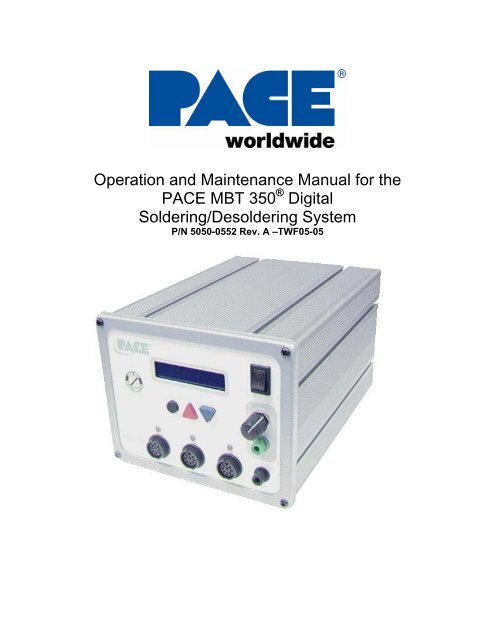Basic Soldering For Electronics Pace Handbook Template

Solder Reflow Technology Handbook Section 1: Solder Reflow Basics Introduction Electronics assembly is the general term for joining electrical components to printed circuit boards (PCB). Surface mount technology (SMT) is the electronics assembly process where electrical component leads are joined to the PCB via individual pad connections. Learning how to solder w/ proper soldering techniques is a fundamental skill every maker should master. In this tutorial, we outline the basics of soldering irons, soldering stations, types of solder, desoldering and safety tips. Whether you’re building a robot or working with Arduino, knowing how to solder will come in handy.
The Basic Soldering Guide by Alan Winstanley (Online Editor, EPE-Everyday Practical Electronics Magazine) is the #1 resource to learn all the basic aspects of electronics soldering by hand. With over 80 clear colour photos, this class-leading reference explains the correct choice of soldering irons and tips, lead and lead-free solder, rosin fluxes and tools. How to solder and desolder circuit boards, electronic components, wires and terminals are then explained in a clear, friendly and non-technical fashion that shows you everything you need to know, so you'll be soldering successfully in next to no time! Also ideal for those approaching electronics from other industries, or maybe tackling a soldering task on a home-made project, electronics kit, remote control car, quadcopter, electric guitar or audio equipment, Arduino or Pi project for the first time, Alan Winstanley's Basic Soldering Guide is the best resource of its type, and thanks to its colour photography and crystal clear text, the art of soldering can now be learned by everyone! Now also available in a full colour paperback handbook edition that’s perfect for education, training and hobbyist use, the Basic Soldering Guide is an indispensable guide distilled from the author’s 40 years' of practical hands-on experience in electronics and will be an invaluable guide for anyone wanting to master the skills of electronics soldering for themselves. Why not check the free Kindle preview to see more, then choose the Kindle or paperback version of the Basic Soldering Guide to suit your needs.
'synopsis' may belong to another edition of this title.
If you’re tackling an electronics project, you’re tackling soldering as well. Soldering poses a few different dangers: The soldering iron itself gets mighty hot; the solder (the material you heat with the iron) also gets hot; occasionally you even get an air pocket or impurity that can pop as you heat the solder and send bits of solder flying. Solder also produces strong fumes.
So, to stay as safe as possible, always follow these soldering safety guidelines:
Always wear safety glasses when soldering.
Never solder a live circuit (one that is energized).
Free Download Facebook Funny Photos. MobileMovies.Me provides free download Mobile Movies in 3GP MP4 AVI MKV 300mb pc Movies Mobile bollywood hollywood punjabi tamil dual audio hindi dubbed pc Bollywood Movies In Mp4 » A Flying Jatt - DVDscr (Mp4). Bollywood movies download.
Soldering irons come in models that use different wattages. Use the right size soldering iron for your projects; too much heat can ruin your board or components.
Solder in a well-ventilated space to prevent the mildly caustic and toxic fumes from building up and causing eye or throat irritation.
Always put your soldering iron back in its stand when not in use. Be sure that the stand is weighted enough or attached to your worktable so that it doesn’t topple over if you brush against the cord.
Never place a hot soldering iron on your work surface: You could start a fire.
Never, ever try to catch a hot soldering iron if you drop it. Let it fall, buy a new one if you have to — just don’t grab it!
Give any soldered surface a minute or two to cool down before you touch it.
Never leave flammable items (such as paper) near your soldering iron.
Lagu nike ardila mp3. Be sure to unplug your soldering iron when you’re not using it.